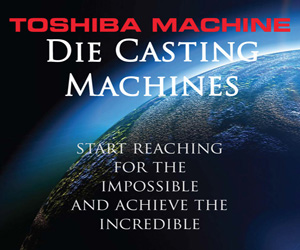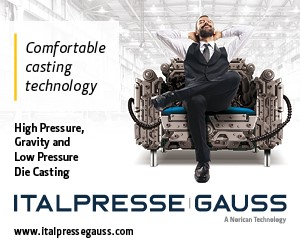Throughout the entirety of the metal casting and metalworking industries, die casting is one of the most widely used metal forming processes. This is due in large part to its incredible versatility, as well as its reliability, accuracy, repeatability, and reasonable cost.
Die cast parts, which range in complexity from simple doorknobs to transmission housings, can be found virtually everywhere, in everything from toys to aircraft.
Die Casting
Die casting as we know it, sometimes referred to as high pressure die casting, dates back to the first half of the 1800s.
Invented in the late 1830s, the process was largely used to manufacture print blocks for typesetters until the usage began to diversify in the 1880s. Today, die casting, as well as die casting variants like squeeze casting and semi-solid metal casting, are used to manufacture an almost infinite array of parts for almost as many industries.
In the die casting process, molten metal — generally non-ferrous materials including magnesium, zinc, copper, and, most commonly, aluminum — are forced into a mold via high hydraulic or pneumatic pressure. These molds, known as dies in the industry, made from high quality tooling steel, can produce extremely complex parts, and lend high degrees of accuracy and repeatability to the process. Because of the versatility of the process, die casting produces more castings than any other casting process.
Other Processes
Manufacturing parts through the die casting process offers a number of benefits. Production is fast, making it ideal for high and very high volume production runs. Close tolerances can be held, net shape or near-net shape parts are produced, and material properties are good.
However, die casting is not the only production process available. Other common manufacturing processes include:
- Powder metallurgy — Powdered metal is compressed into the shape of a part and then heated to promote cohesion.
- Stamping — Sheet metal is stamped into shape on presses using a tool and die.
- Foundry and investment casting — Molten metal is poured, rather than injected, into a mold; investment casting uses a ceramic mold developed over a discarded wax cast as opposed to a tooled steel mold.
- Extrusions — Solid metal is forced through an open die.
- Forging — Heated solid metal is shaped by a die using percussive or compressive force.
- Additive manufacturing/3D printed metal — A 3D printer deposits material layer by layer.
Learn More
There are many other process options, each of which has their own strengths and weaknesses. Before contracting a manufacturer to produce a part, it is important to understand the specifics of the process they specialize in.
To learn more about die casting’s strengths and uses, visit our video library to find informative videos on die casting.








